
 The newsletter of the Radio JOVE Project
The newsletter of the Radio JOVE Project"Radio Astronomy Citizen Science and Outreach"

 The newsletter of the Radio JOVE Project
The newsletter of the Radio JOVE Project
My name is Carl Pajak (pn. PAY-jack) and everything of space fascinates me. I am 57 years old and a past Computer Network Engineer (30+years) by trade. I hold no formal education in any of the space sciences, so I am a very amateur astronomer.
My days in Radio Astronomy started quite by accident. As I was building a very powerful audio amp (thank you Forrest Mims III) a long length of wire was inadvertently connected to the inputs, and lo and behold pops and whistles could be heard. What I was receiving was Very Low Frequency (VLF) transmissions. So my journey began.
My first Radio “Telescope” was a loop antenna and receiver kit from Stanford University's Sudden Ionospheric Disturbances (SIDs) project at VLF wavelengths. This continued for four years. Then I moved on to NASA’s Inspire VLF3 receiver kit. With this kit, the whole world of VLF was open to me using inexpensive Raspberry Pi 3b+ computers running VLF-Tools software (written and maintained by Paul Nicholson). After twelve years of VLF, the local “A/C noise” made the studies unusable and it was time for something different. Welcome Project Radio JOVE!
With guidance from Dr. Chuck Higgins, I purchased the Radio JOVE 2.0 kit with the RSP1a receiver in September of 2022. Within one weekend I had it built and running. With some fiddling with the software and tremendous help from the Radio JOVE groups.io list (best group of people ever!), I was receiving signals! My current set up is the dual dipole antenna, 15 feet above ground, with phasing cable fed to a HP laptop running SDRPlay2RSS and RSS for 24/7 observation.
Located in Wasilla, Alaska (Sixty-One North) USA, has proven unique “challenges” to observations. Besides the obvious; snow storms, 70mph ice winds, -40F temps, during the winter, the sun is up only six hours of the day, which is great for Jupiter observations. But, during the summer, we have 18 plus hours of daylight, which, I hope, will be good for the solar side.
In closing, I just want to say, anyone, regardless of age, education or location can participate in Project Radio JOVE and make valuable scientific observations and have the support of many other participants in their journey of Radio Astronomy.
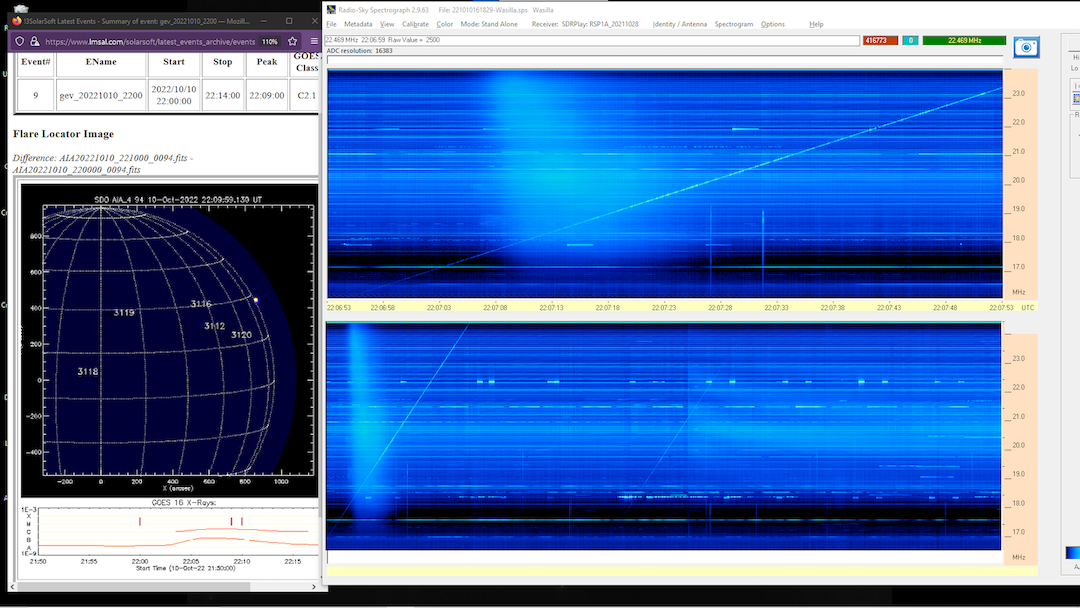
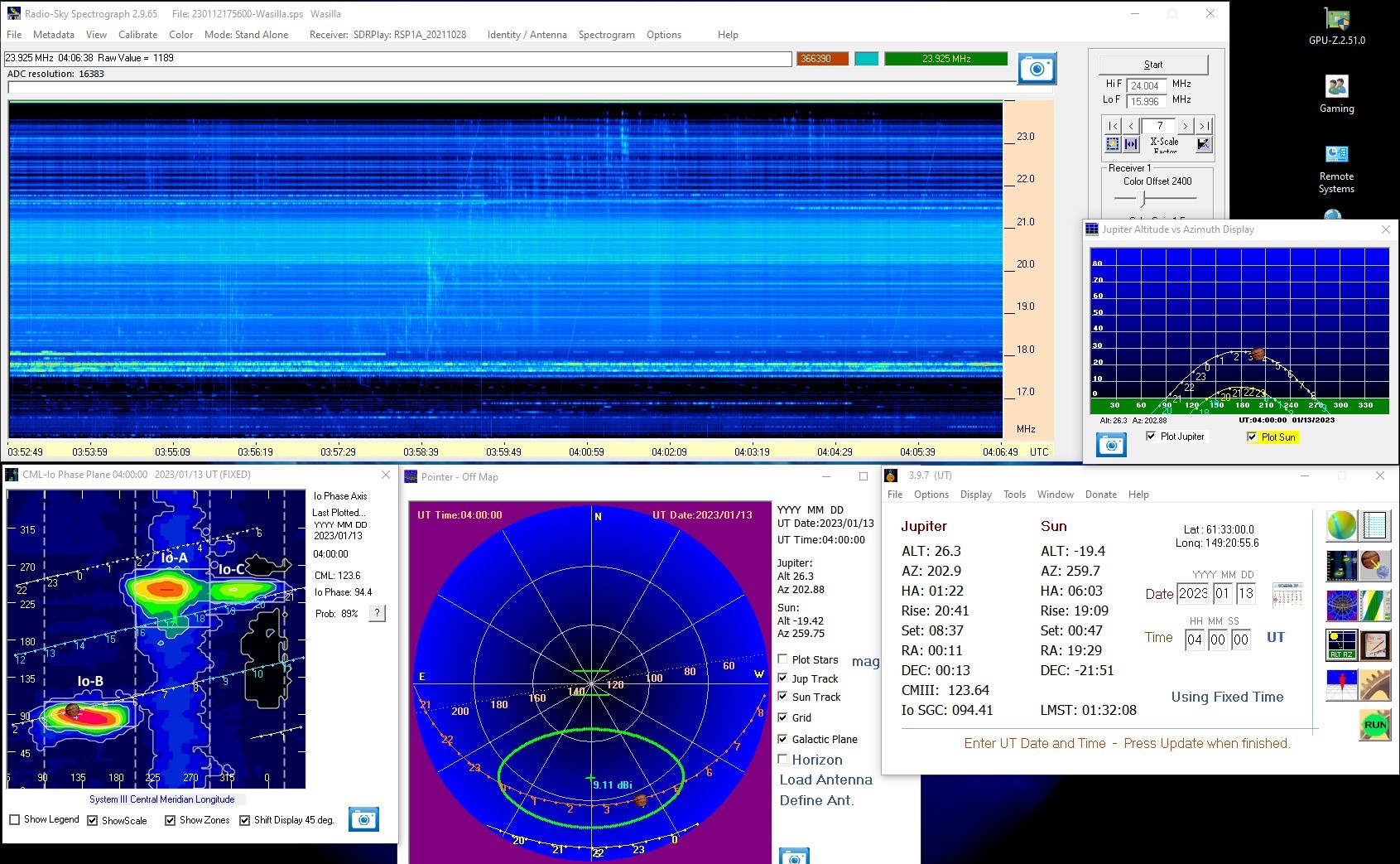
My name is Vernon French aged 75 years, retired!!! My observatory “Space Lab” is located at Takone, Tasmania, Australia. Latitude 41.14606 South, Longitude 145.6575 East.
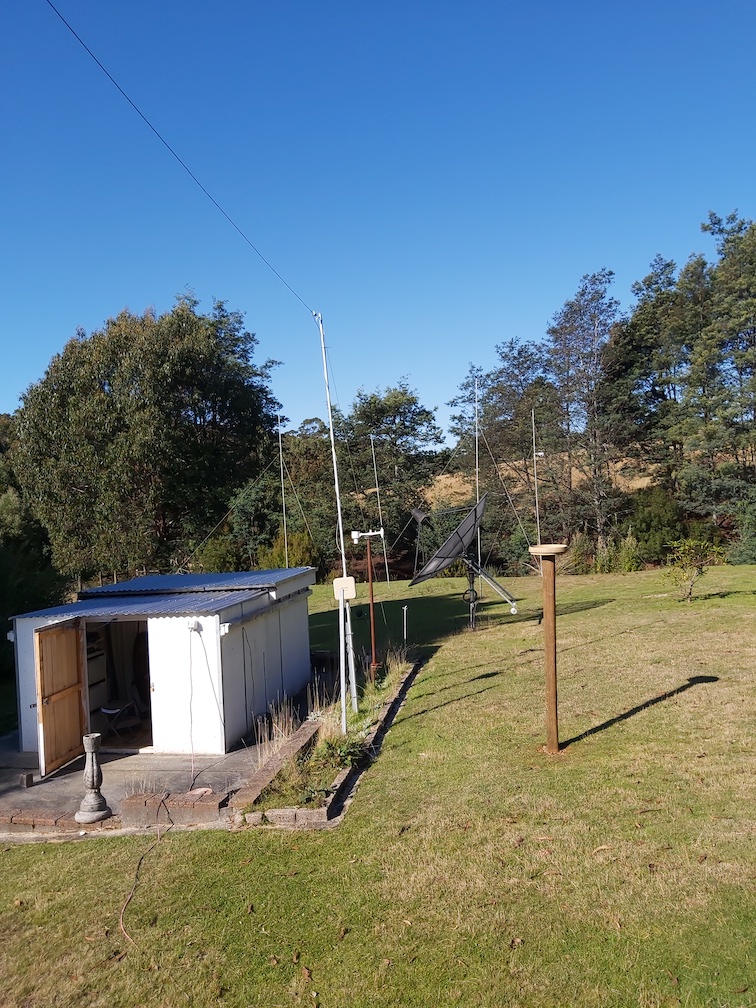
My interest in Astronomy started out as Optical, using an 8 inch Newtonian Telescope for photographing Deep Space Objects such as the Horse Head dark nebula
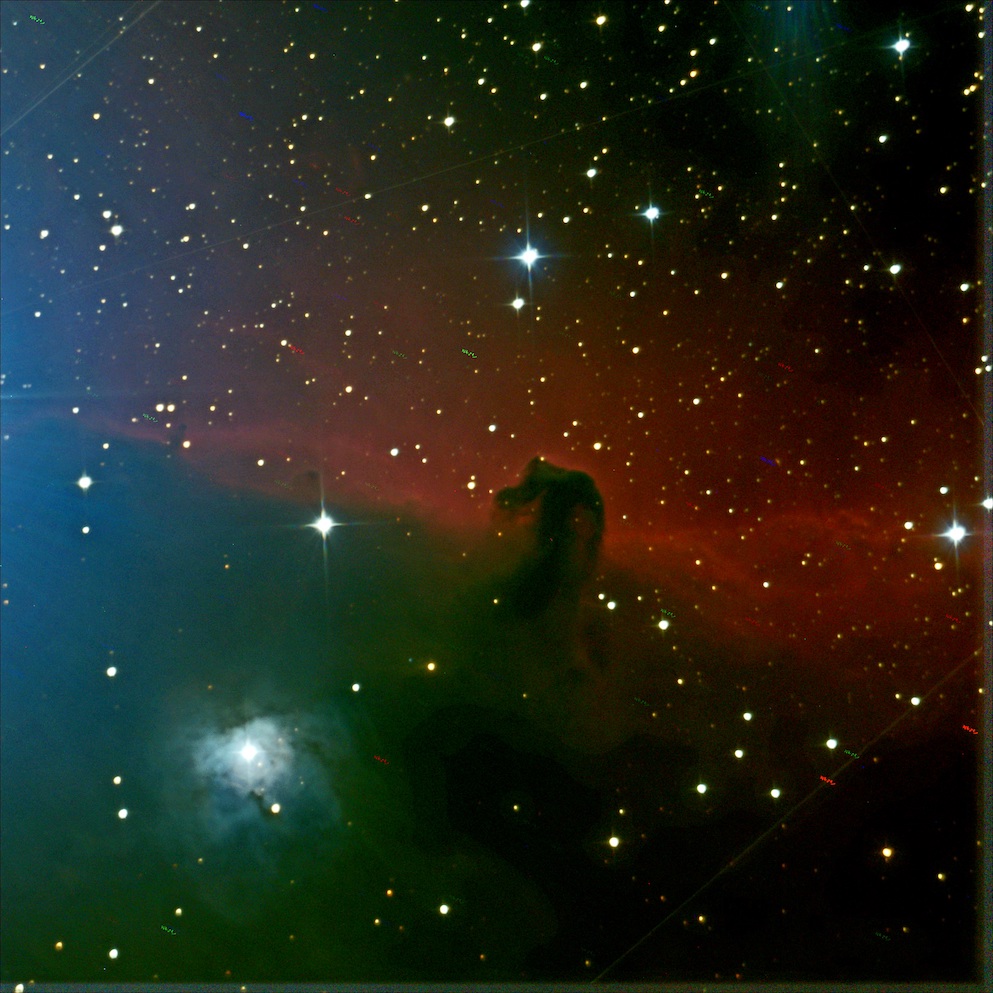
In November 2022 I received a Jupiter Io-B storm.
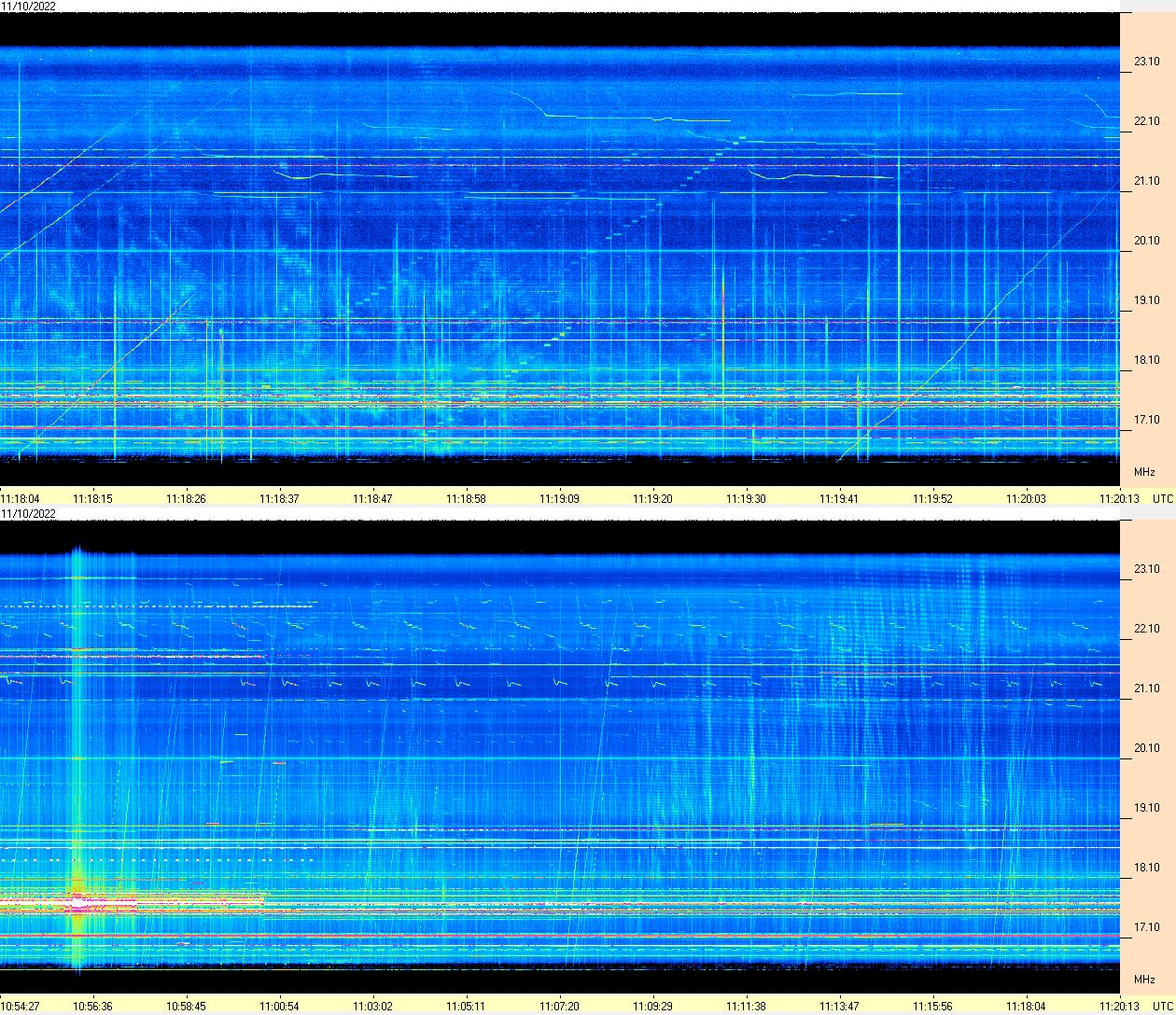
And a strong Solar Storm on my spectrograph
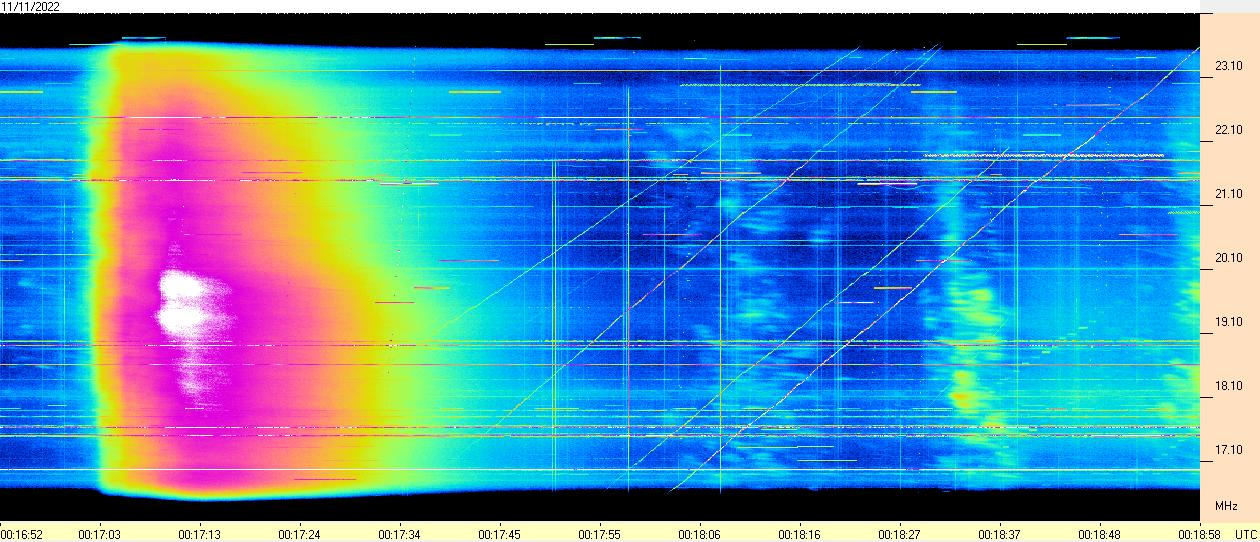
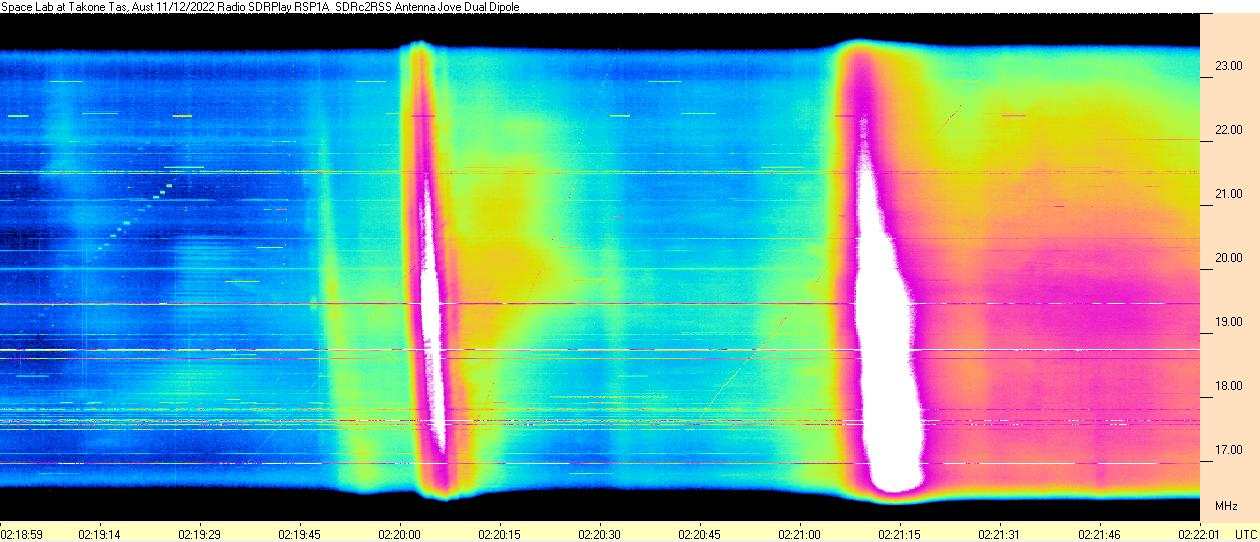
Since becoming a member of the Radio JOVE Project I have uploaded several spectrographs to the Radio JOVE archive and shared on the group.io list and have in the process learned valuable information from group members to further advance my knowledge of Radio Astronomy. THANK YOU ALL
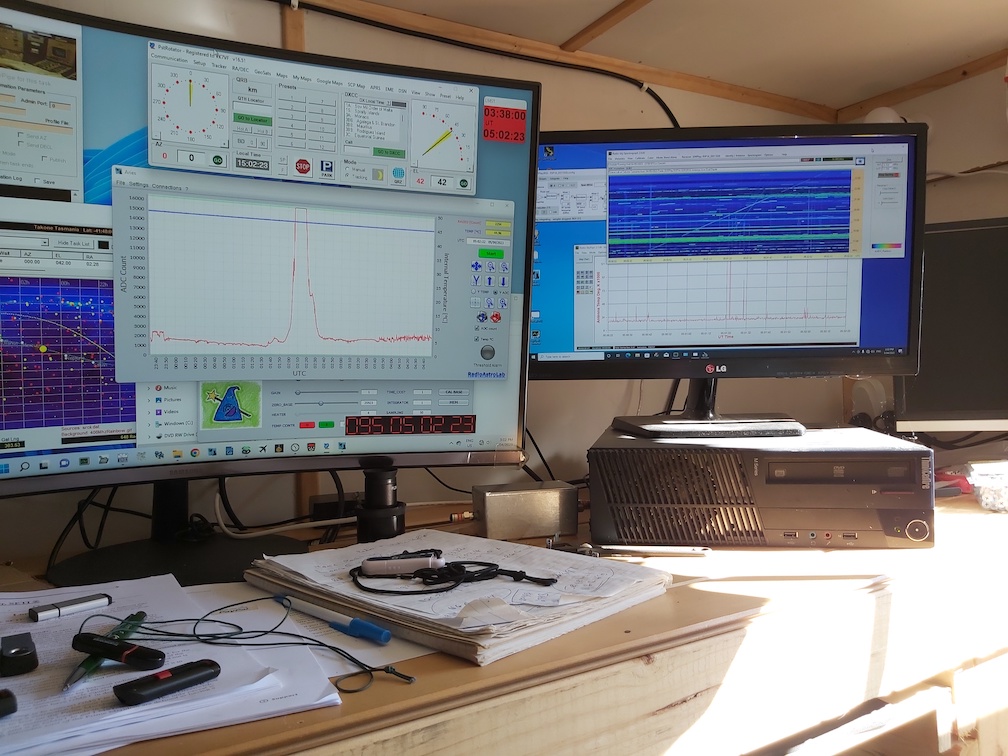
Radio JOVE is planning to use radio telescopes to make coordinated observations of the Sun for the October 14, 2023 and the April 8, 2024 solar eclipses. In support of NASA Citizen Science and in partnership with the Heliophysics Big Year (https://solarsystem.nasa.gov/solar-system/sun/helio-big-year/), Radio JOVE wants your help to study the Sun. [Radio JOVE is a worldwide community. We recognize that these two solar eclipse events happen over the Americas, but anyone is welcome to participate and learn with us.]
To coordinate and help our observers, we have practice sessions scheduled for 2023 and 2024. Our 2023 schedule is:
Radio JOVE, the SunRISE Mission, and others are interested in studying the Sun at radio frequencies below 30 MHz. We want to better understand the radio emissions caused by solar activity and emitted in the solar corona by energetic plasma. We learn about radio emission processes and radio wave propagation from the Sun to the Earth, and specifically through Earth's ionosphere. A network of radio telescopes can help us understand the temporal and spatial variations in the ionosphere like changes in plasma density, propagation cutoff frequencies, radio fadeouts, and latitudinal variations.
It is well known that the plasma in the ionosphere changes significantly between the nighttime and daytime, and it also demonstrates short-term changes because of the lunar shadow during a solar eclipse. We are observing the Sun during the solar eclipse to try to quantify these changes to better understand the ionosphere.
We seek observations at single or multiple frequencies anywhere from 15-30 MHz both inside and outside the path of the eclipse to study the solar radio emissions and the ionosphere. Use your Radio JOVE 1.1 receiver (20.1 MHz), Radio JOVE 2.0 SDRplay radio (16-24 MHz), or custom built FSX spectrographs (15-30 MHz) for your observations. By using multiple radio telescopes across the Americas, we'll have a larger database for comparisons. Ideally, we observe the Sun many days before and after the eclipse at a particular location so we can compare them to the observations during the day of the eclipse. However, for temporary setups, single day observations on the day of the eclipse are highly valued.
The best plan is to observe from sunrise to sunset at your location. However, we are most interested in observations within four hours of transit (i.e., when the Sun crosses the meridian or is highest in the sky), or about 8:00 am - 4:00 pm local time each day.
Here are some important instructions for observations.
Help and Conversation
Radio Telescope Setup and Observation
Data Analysis and Data Archiving
Thank you for your participation in NASA Citizen Science!
Radio JOVE participants made a rare night-time observation of a solar radio burst in the upper HF band around 0613 UTC on 23 Feb 2023. The ability to observe solar bursts at night is rare and occurs only when conditions support a propagation mode similar to antipodal focusing. In this mode, the solar burst emission enters the region between the ionosphere and Earth's surface on the day side of the planet. Some portion of the emission gets trapped between the ionosphere and the surface, whereupon it propagates via ionospheric and ground reflection like any other HF band signal. Propagation then converges from all azimuths towards the antipodal point on the night side of the planet. If a radio observatory is located close enough to the solar antipode, the solar burst may be observed.
The Space Weather Prediction Center logged a major Type V (continuum emission) event on 23 Feb 2023 between 0612 and 0617 UTC as observed by the Learmonth, Australia facility. This burst was observed by several Radio JOVE participants in the southern USA from Florida to New Mexico as shown in Figures 1 through 5 below. The burst was not present in spectra recorded by Carl Pajak in Wasilla, Alaska, most likely because that station was too distant from the antipodal point.
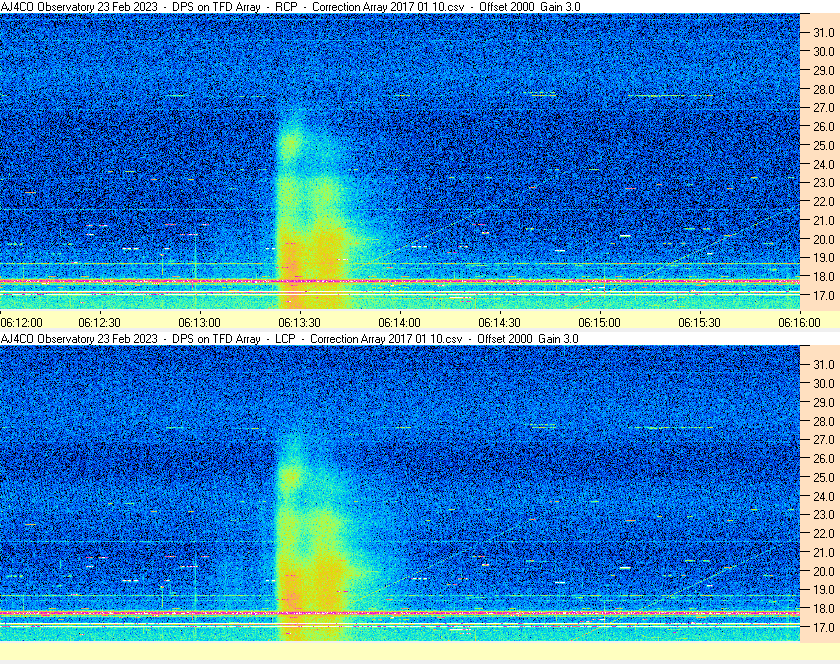
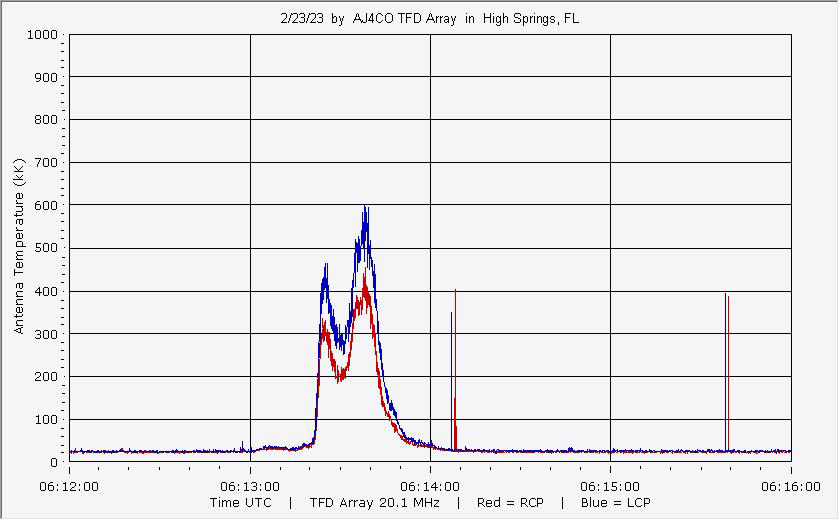
Figs 1 & 2 - At AJ4CO Observatory in High Springs, Florida, sunset was at 2325 UTC and next sunrise was at 1132 UTC. The Sun reached lower culmination at 0543 UTC (AZ 0deg, EL -70deg), a half hour before the burst was observed. At 0613 UTC, the observed burst time, the Sun was 69 degrees below the horizon at an azimuth of 21 degrees. This was not precisely antipodal to AJ4CO Observatory, but apparently close enough.
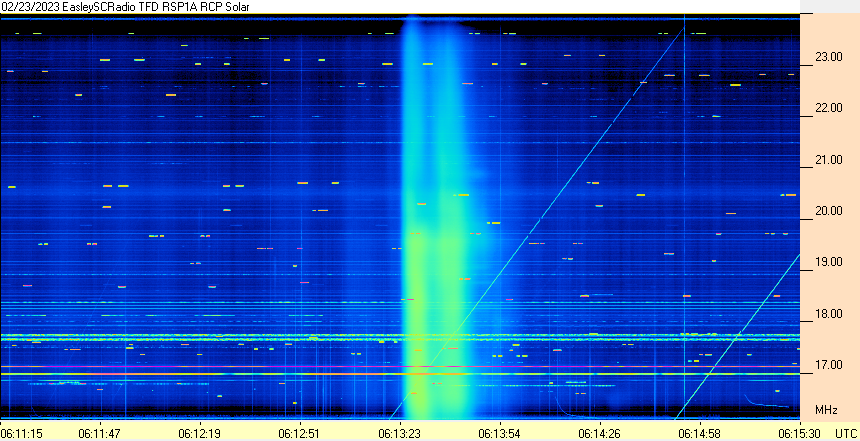

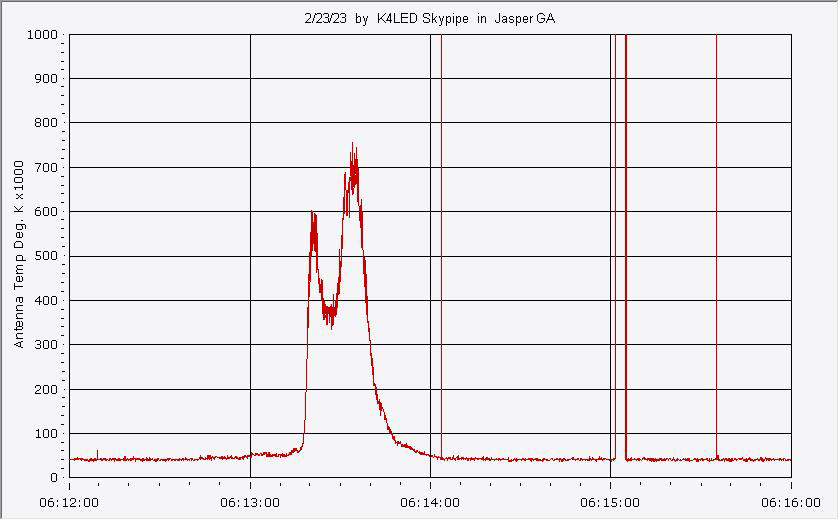
Note: Dave Typinski's observations were also featured on
SpaceWeather.com
Note 2: Even though these events are rare if you've been
around as long as Radio JOVE has been you may see another. On
August 4th, 2011 at 0358 UT another midnight solar burst was
observed. See our Radio JOVE Bulletin article in the November 2011 issue.
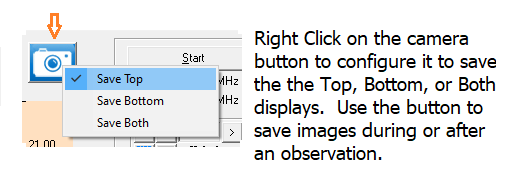
Radio JOVE observers frequently share images in our radio-jove@groups.io group. Spectrograph images can be quickly saved using the camera button in the upper right of the program. Image files saved this way contain useful meta-data about the observation. Unaltered PNG and JPG images have the advantage that they can automatically direct other users to the same region of their matching observations. See page 70 of the RSS help manual for more information about this. If you submit images to the Radio JOVE archive, please use the camera button to create these images. The embedded metadata will add to the value of your contribution.
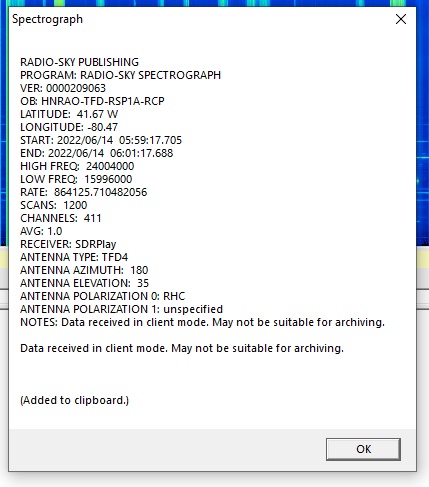
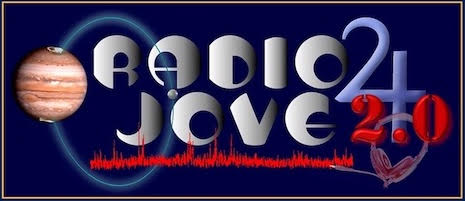
The JOVE Bulletin is published twice a year. It is a free service of the Radio JOVE Project. We hope you will find it of value. Back issues are available on the Radio JOVE Project Web site, http://radiojove.gsfc.nasa.gov/
For assistance or information send inquiries to:
or
